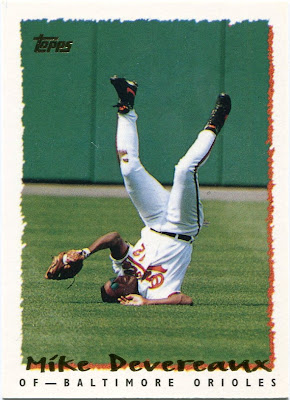Best I can tell, there's only one downside to binders.
Unless you can get lucky and find them at a garage sale, pages (and binders themselves, for that matter) don't usually come too cheap.
While I'm chomping at the bit to move these frankenset nominees into their very own binder home, my lack of spare pages isn't allowing me to do so. (I've been using temporary pages from my regular "team binders" for these posts.)
So, to reiterate, if you happen to have any spare nine-pocket pages lying around, please let me know. I can make it worth your while in cardboard.
Begging aside, let's take a look at this week's glorious frankenset inductees. After basking in the glory of a completed page last week, tonight's page is one that still needs a bit of work.
Let's take a look at the stats.
Completion status: 6/9
Numbers missing: #s 21, 24, 25
The card: 1972 Topps #19 Billy Cowan
Why it made the cut...
This is definitely one of my personal favorites from this frankenset.
Although not one of the bigger names or high-dollar cards of the 1970's, Mr. Cowan here has developed a bit of a cult following among the more low-end minded collectors in the hobby.
Of course, this piece comes from one of the more beloved sets in history with '72 Topps. Here, the Topps photographer managed to perfectly place Cowan underneath the huge halo atop the Angels Stadium scoreboard.
While I can't say I'd ever heard of Billy Cowan before this card came around, my heart jumped when I nabbed it from a 12/$1 box earlier this year. I was ecstatic to finally own such a fantastic piece of cardboard.
It's safe to say that Mr. Cowan has a stronghold on the #19 slot at this point.
The card: 1994 Topps #20 Bryan Harvey
Why it made the cut...
Formerly of "Gems of Junk Wax" fame, Bryan Harvey made for one of the more interesting cards from '94 Topps.
The neat "water vapor" effect is one I've only seen used on a couple other cards in my travels. Sure, it might be a bit cheesy. But it's still incredibly neat nonetheless.
Plus, Mr. Harvey came pretty darn close to knocking out one of my all-time favorite cards in this blog's "Gems of Junk Wax" tournament. (He lost by just four votes.)
After all is said and done, I'd probably place this one in the "cult classics" realm of the hobby as well.
The card: 1993 Fleer #22 Chuck McElroy
Why it made the cut...
Against all odds, Chuck McElroy is our first multiple frankenset inductee.
His fantastic '98 Score "behind the camera" card previously made the cut at the #12 spot.
This time around, though, the mean spectacles alone earned McElroy his second place in this checklist.
Like Cowan and Harvey, I'd never heard of Chuck McElroy before I started this whole frankenset business. Then again, that's been another unexpected benefit of such a project.
I've been familiarizing myself with a ton of new ballplayers along the way.
The card: 1995 Topps #23 Mike Devereaux
Why it made the cut...
As one of the few "head over heels" cards I own, it's going to be pretty difficult to knock Mr. Devereaux out of this checklist.
It's easily one of my favorite singles from arguably the most underrated Topps set of all-time.
The card: 1992 Studio #26 Jose Rijo
Why it made the cut...
While '92 Studio is one of the blandest sets on record, it produced an absolute gem with this one.
I should add that this isn't the last time you'll see Jose Rijo mentioned in my frankenset posts. I've received quite a few fantastic cards of his from fellow bloggers over the last few months.
From what I can see, he was one fun-loving individual.
Believe me, this card is just the beginning.
The card: 1993 Upper Deck #27 Dave Nied SR
Why it made the cut...
Today's frankenset page ends with the very first selection of the 1993 Expansion Draft.
Given that 1993 was the inaugural year for Colorado, I'd guess this was one of the first Rockies cards ever printed. (If not the first.)
A highly touted prospect out of the Atlanta organization, Nied would've been the first pick of the draft either way. (The card's back confirms that the Marlins would've taken him if they'd had the initial selection.)
Sadly, Nied never did much during his stint in Colorado, winning just 14 games and sporting a 5.47 ERA in four years with the Rockies.
At best, he'll forever be the answer to a trivia question.
With all the hype surrounding Nied, I have to imagine that this was a fairly coveted card back in the day.
Even though it's simply another common today, Nied's "Star Rookie" issue is still a fantastic piece of cardboard. For starters, it features one of the more awesome backdrops I've ever seen.
Plus, a "tip of the cap" always seems to make cards a million times better.
If you ask me, it's a terrific way to close out the third page of my frankenset binder.


















































